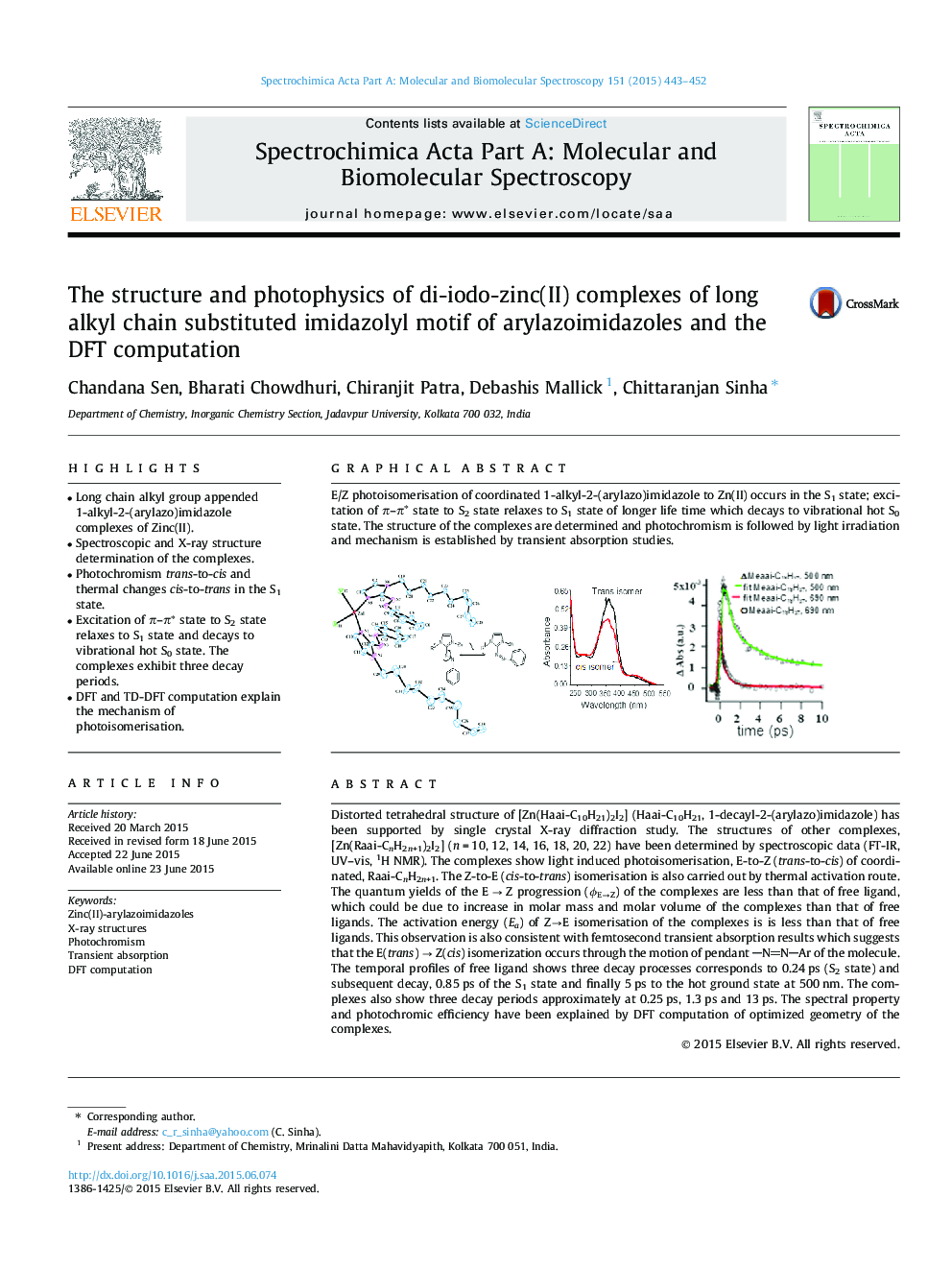| Article ID | Journal | Published Year | Pages | File Type |
|---|---|---|---|---|
| 1230101 | Spectrochimica Acta Part A: Molecular and Biomolecular Spectroscopy | 2015 | 10 Pages |
•Long chain alkyl group appended 1-alkyl-2-(arylazo)imidazole complexes of Zinc(II).•Spectroscopic and X-ray structure determination of the complexes.•Photochromism trans-to-cis and thermal changes cis-to-trans in the S1 state.•Excitation of π–π∗ state to S2 state relaxes to S1 state and decays to vibrational hot S0 state. The complexes exhibit three decay periods.•DFT and TD-DFT computation explain the mechanism of photoisomerisation.
Distorted tetrahedral structure of [Zn(Haai-C10H21)2I2] (Haai-C10H21, 1-decayl-2-(arylazo)imidazole) has been supported by single crystal X-ray diffraction study. The structures of other complexes, [Zn(Raai-CnH2n+1)2I2] (n = 10, 12, 14, 16, 18, 20, 22) have been determined by spectroscopic data (FT-IR, UV–vis, 1H NMR). The complexes show light induced photoisomerisation, E-to-Z (trans-to-cis) of coordinated, Raai-CnH2n+1. The Z-to-E (cis-to-trans) isomerisation is also carried out by thermal activation route. The quantum yields of the E → Z progression (ϕE→Z) of the complexes are less than that of free ligand, which could be due to increase in molar mass and molar volume of the complexes than that of free ligands. The activation energy (Ea) of Z→E isomerisation of the complexes is is less than that of free ligands. This observation is also consistent with femtosecond transient absorption results which suggests that the E(trans) → Z(cis) isomerization occurs through the motion of pendant NNAr of the molecule. The temporal profiles of free ligand shows three decay processes corresponds to 0.24 ps (S2 state) and subsequent decay, 0.85 ps of the S1 state and finally 5 ps to the hot ground state at 500 nm. The complexes also show three decay periods approximately at 0.25 ps, 1.3 ps and 13 ps. The spectral property and photochromic efficiency have been explained by DFT computation of optimized geometry of the complexes.
Graphical abstractE/Z photoisomerisation of coordinated 1-alkyl-2-(arylazo)imidazole to Zn(II) occurs in the S1 state; excitation of π–π∗ state to S2 state relaxes to S1 state of longer life time which decays to vibrational hot S0 state. The structure of the complexes are determined and photochromism is followed by light irradiation and mechanism is established by transient absorption studies.Figure optionsDownload full-size imageDownload as PowerPoint slide
